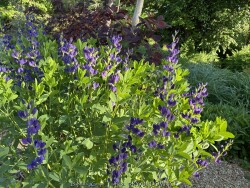
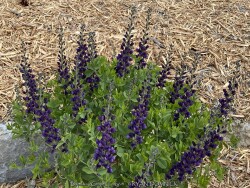
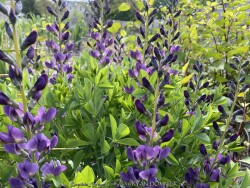
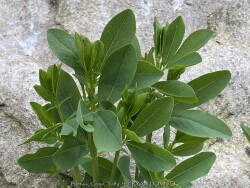
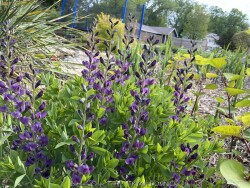
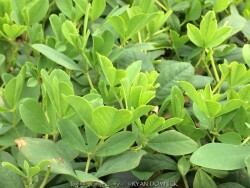

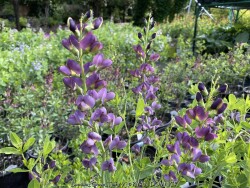
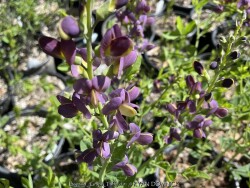

Plant Min Zone: 4a
Plant Max Zone: 8b
Sunlight: All Day Full Sun, Full Sun
Water / Rainfall: Low, Average
Soil Quality: Poor, Average, Rich
Bloom Season: Spring
Flower Color: Purple
Berry / Fruit Color: None
Spring Foliage Color: Mint Green
Summer Foliage Color: Bluish Green
Fall Foliage Color: Bluish Green, Black
Evergreen Foliage: No
Winter Interest: Some
Scented Flowers: No
Drought Tolerance: High
Wet-Feet Tolerance: Low
Humidity Tolerance: Medium, High
Wind Tolerance: Medium, High
Poor Soil Tolerance: Clay Soils, Rocky Soils, Sandy Soils
Height: 2' - 3'
Width: 2' - 3'
Growth Rate: Medium
Service Life: Extremely long: over 20 years
Maintenance Need: Almost Zero Maintenance
Spreading Potential: Low
Yearly Trimming Tips: Trim Perennial to Ground in Early Winter After Hard Freezes: Some Winter Interest.
Plant Grouping Size: Specimen Planting of 1-3, Small Grouping of 3-5, Medium Grouping of 5-10
Best Side of House: South Exposure, West Exposure, East Exposure
Extreme Planting Locations: Survives Severe Drought, Tolerates Extreme Heat, Top of Retaining Wall Locations, Resistant to Rabbits
Ornamental Features: Multiple Seasons of Interest, Long Blooming Season, Long Lasting Fall Color
Special Landscape Uses: None
Possible Pest Problems: Caterpillars
Plant Limitations: Susceptible to Juglone / Black Walnut, Late to Emerge or Leaf Out in Spring
Shippable in 2026: YES
The False Indigo species (Baptisia) features beautiful compact bluish green leaves arranged in groups of three. Like many members in the legume family, they are nitrogen fixing plants which means they produce their own nitrogen in the soil through a symbiotic relationship with bacteria. The flowers bloom above the foliage normally in April and May. Common baptisia flower colors include white, purple, lavender, yellow, and pink as well as uncommon colors ranging from deep purple to maroon and even coppery orange. Considered a great North American native three season plant, the foliage always emerges very attractive followed by flowers that do not need deadheading. Foliage generally lasts pretty nice through hot summers and into fall turning black with first freeze. Seed pods also turn charcoal black when ripe and have considerable ornamental interest and useful in dried flower arrangements. At some point in the fall, it can be cut down early for a clean look or left for winter interest. Baptisia generally do well in droughty clay soils in full to part sun. There is only one pest that may create problems called the Genista Broom Moth. It may occur in Kansas when weather conditions are consistently dry and over 95 degrees F. It is treatable if you act fast but if not, it only destroys the foliage late in the season and does not kill the plant. Baptisia has several enormous spreading taproots which store water and energy and can make transplanting difficult. Plantings look good as specimen or in small groups; and it's ok even preferable if they grow together and touch other plants. That helps eliminate available sunlight and discourages weeds. It is hard to picture a native plant garden or any perennial garden without Baptisia. Considered a once "it's there, it's always there" plant. Baptisia 'Grape Taffy' is a compact cultivar from the Walters Gardens, Inc. reaching only 2-3' tall. This color break-thru features spikes of deep reddish-purple flowers appear in early summer, reminiscent of grapes. The foliage of Grape Taffy, more green compared to other varieties, looks attractive even when the flowers are not in bloom. This extremely long-lived perennial could be used instead of a shrub in landscape settings, with minimal care required to thrive year after year.